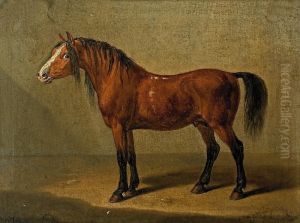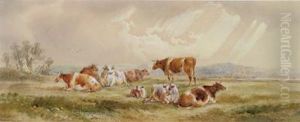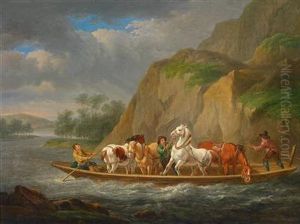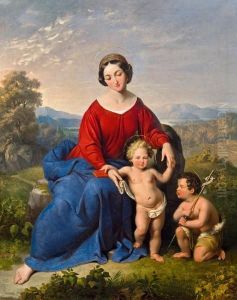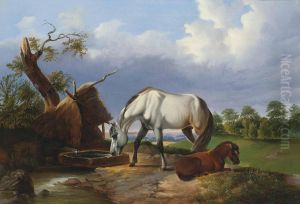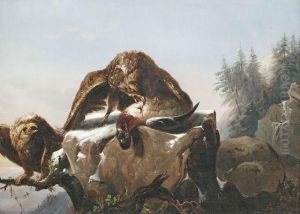Johann Baptist Ii Dallinger Von Dalling Paintings
Johann Baptist II Dallinger von Dalling was an Austrian artist known for his work as a painter, primarily during the 19th century. Born on July 20, 1782, in Vienna, Austria, he was part of a family with a strong connection to the arts; his father, Johann Baptist I Dallinger von Dalling, was also a respected painter of his time.
Dallinger von Dalling received his early training from his father and later attended the Academy of Fine Arts Vienna, where he honed his skills and developed his style. His works are characteristic of the Biedermeier period, which was a style prevalent in the German-speaking countries of Europe during 1815-1848, characterized by a focus on simplicity and modesty in reaction to the excesses of the previous Empire and Romantic styles.
Johann Baptist II's paintings often depicted domestic scenes, landscapes, and portraits. His attention to detail and ability to capture the essence of middle-class life made his work popular among the bourgeoisie of the time. He also painted religious themes and was known for his frescoes in various churches in Austria.
Throughout his career, Dallinger von Dalling exhibited his work in various venues, including the Academy of Fine Arts Vienna. His art contributed to the cultural landscape of Austria during a period of significant transformation and modernization. Despite the popularity of his work in his time, Johann Baptist II Dallinger von Dalling is not as widely remembered as some of his contemporaries.
He continued to paint and contribute to the art world until his death on December 5, 1868, in Vienna. Today, his works can be found in private collections and museums throughout Austria and serve as a testament to the Biedermeier period's aesthetic and cultural values.
